Posted: 08/11/19 (15:44pm)Another sword has gone home. It gives me great pleasure when I am able to reunite a family with one of their ancestor’s swords. I have done this on several occasions over the years.
The sword, a 1912 pattern cavalry officer’s belonged to the 12th Laird (Lord) of Torwoodlee in the Scottish Borders.
James Lewis Pringle was born in 1890. After the death of his father in 1902, twelve year old James became the 12th Laird of Torwoodlee.
As a Captain in the Lothians & Border Horse, James was mobilised to France on the 4th August 1914, where he remained until 1919. The opening months of the war saw cavalry at the forefront of the action with plenty of opportunity to use their new swords. It was with a sword of this type, a Pattern 1912 that the first British kill of the War was made by Captain Hornby of the 4th Dragoon Guards during a skirmish with the German 4th Cuirassiers.
James, the 12th Laird of Torwoodlee passed away in 1953.
Luckily, Captain Pringle’s name and regiment were etched onto the blade of his sword so I was able to contact his grandson, the 14th Laird of Torwoodlee and the sword is now back home alongside those of other ancestors.

Posted: 28/08/19 (13:54pm)Ok, so two months have passed and I have really loved owning and researching this sabre. I have had some really enlightening and fascinating chats with Richard Dellar, the foremost expert on British cavalry sabres and we are now 98% sure that we know the story behind this beautiful and unusual sword.
To recap, I bought what I believed was a bespoke British Flank officer’s sabre, but which might also be a bespoke cavalry sabre. I wasn’t exactly sure what it was, but it was turn of the 18th Century, by a top maker and in fantastic condition.
The things that stood out about the sword were that the fuller ran almost the length of the blade. The blade itself was of typical length, so hadn’t been shortened. I knew of only two blades of this type used by the British, the 1788 cavalry sabre and those used by some Flank officers.
The bespoke steel scabbard was also unusual. Its drag was completely different to the typical 1796 Light cavalry scabbard drag. It too was more reminiscent of a Flank officer’s scabbard. But different…
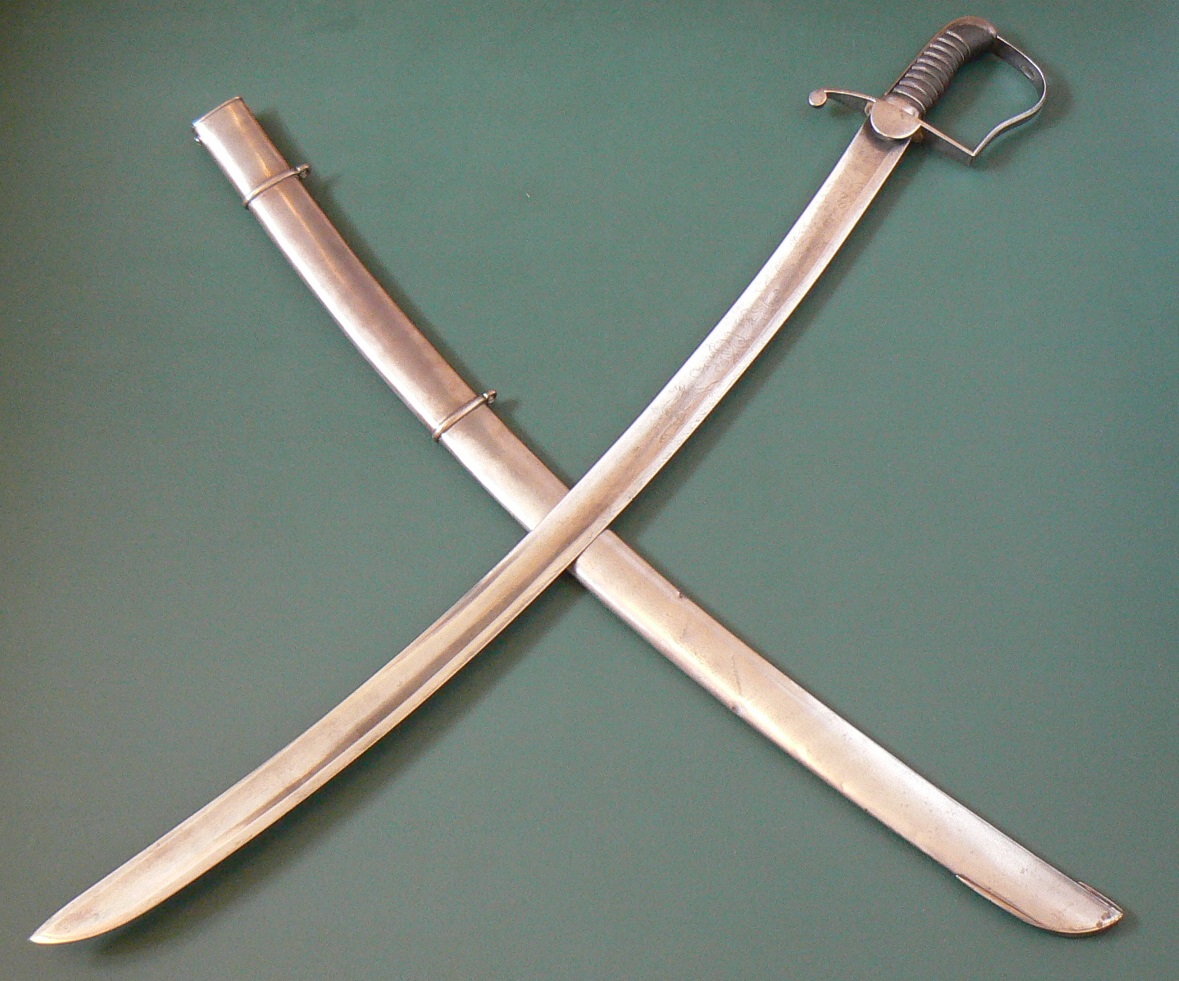
Having frustrated and exhausted my usual lines of enquiry I contacted Richard Dellar, author of “The British Cavalry Sword 1788-1912” a must have volume on British Cavalry Sabres. Richard was enthusiastic about the sword and was immediately convinced that it was not a Flank officer’s sabre.
The sword began service life as a 1788 pattern cavalry sabre and was later re-fitted with the “new” 1796, regulation pattern stirrup hilt and a bespoke steel scabbard.
Why this was done is open to speculation. There are several reasonable reasons for doing this, the most plausible being that;
· A new officer bought a good P1788 and had it re-hilted because it was cheaper than buying a new P1796.
This is possible, but unlikely. Cavalry were the elite. Officers were from the wealthiest families and snobbery was rife. An officer who could not afford to buy a new sword could be humiliated.
· The sword was an heirloom and was handed down from father to son. Perhaps it had served the father well or bore some other significance. In order to conform to the new 1796 regulations and be useable by the son, the sword was re-hilted. With this reason, and being from a wealthy family, a charge by his peers of being “cheap” or “poor” would not apply.
· A serving officer wished to continue using his P1788 sabre. Again, because the sword had served him well or for other, more superstitious reasons, and so had the sword re-hilted.
The latter are the most likely explanations. The sword was clearly the property of a wealthy officer and by a prestigious maker and the cost of re-hilting and having a bespoke scabbard made would have been high. Maybe even more than buying a new P1796 from a lesser maker.
Of the two, I go for the sabre being a family sword, handed from father to son. Maybe the father used the sabre in Flanders and hoped that the sword would somehow keep his son safe in the battles of the Peninsular?
As a collectors piece this sword certainly ticks all the boxes. It has a prestigious maker, is beautifully etched, dateable, has the owners’ initials and is in fantastic condition. It also has the history and romance of the back story. It has it all. And I am sure that there is more to find out by an interested collector.
I will be offering this sabre for sale on the website very soon.
Posted: 21/06/19 (11:54am)Sometimes I buy a sword that I really do not want to sell. Sometimes I give in and keep it.
I used to do that more often when I started than I do now. About 10 years ago, at a fair here in Scotland, a fellow dealer told me that I had to decide whether I was a dealer or a collector. He told me that I could not be both. I disagreed with him then and still do. Of course, one can both collect and deal. One just has to be firm with one’s self and resist keeping items that were bought to sell. It isn’t always easy.
Now I find myself struggling with whether or not to keep a beautiful 1796 pre-regulation flank officer’s sabre. As a collector, it ticks all the boxes. Top maker, dateable to the turn of the 18th Century – a Peninsular Wars, maybe Waterloo sword. A rare pattern, a beautifully engraved blade with unique engravings as well as the maker’s name and owner’s initials. Moreover, it is in fantastic condition, complete with scabbard. I’m wavering…
Should I? Shouldn’t I? It owes the business a serious chunk of change. But…

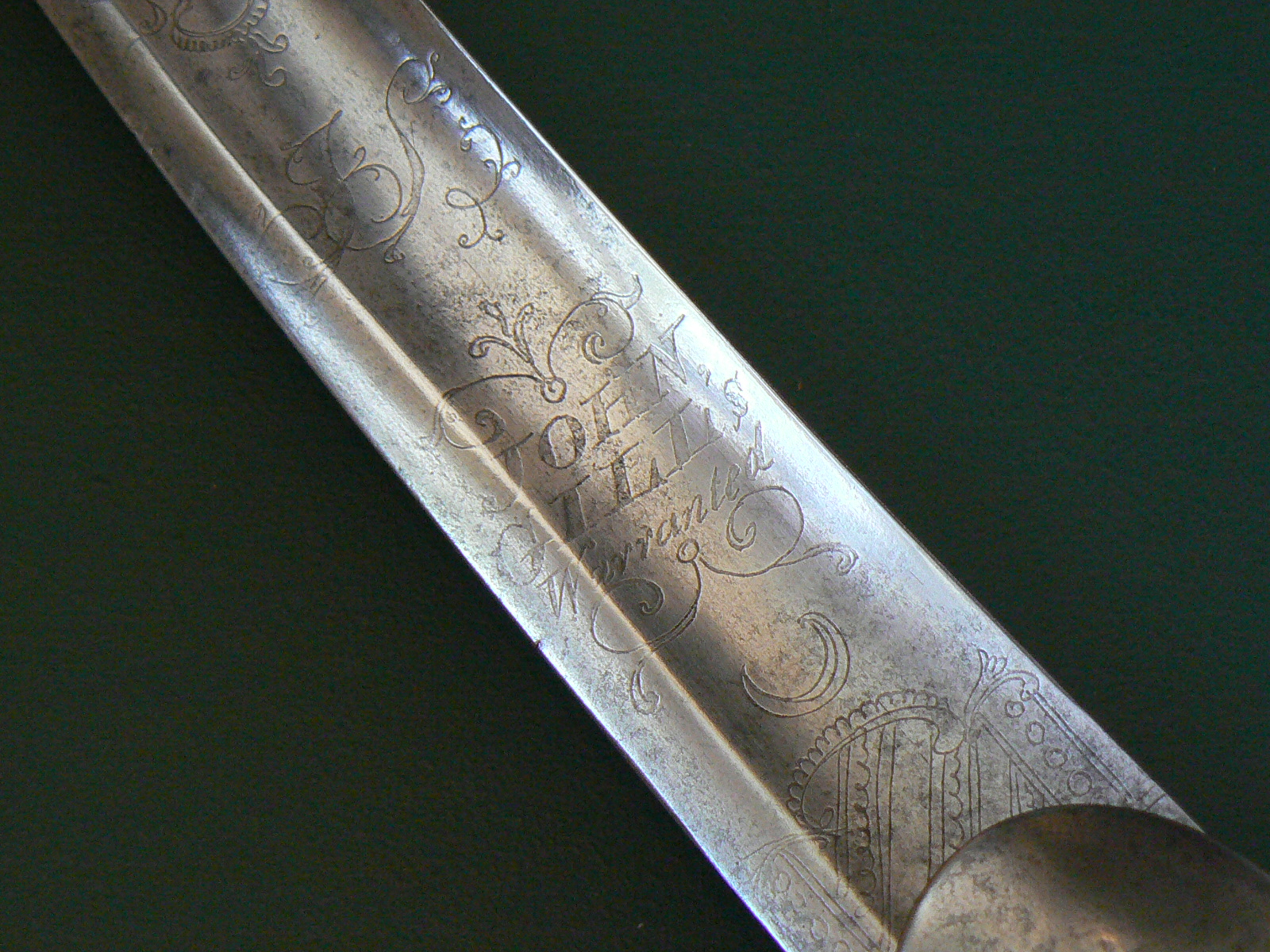
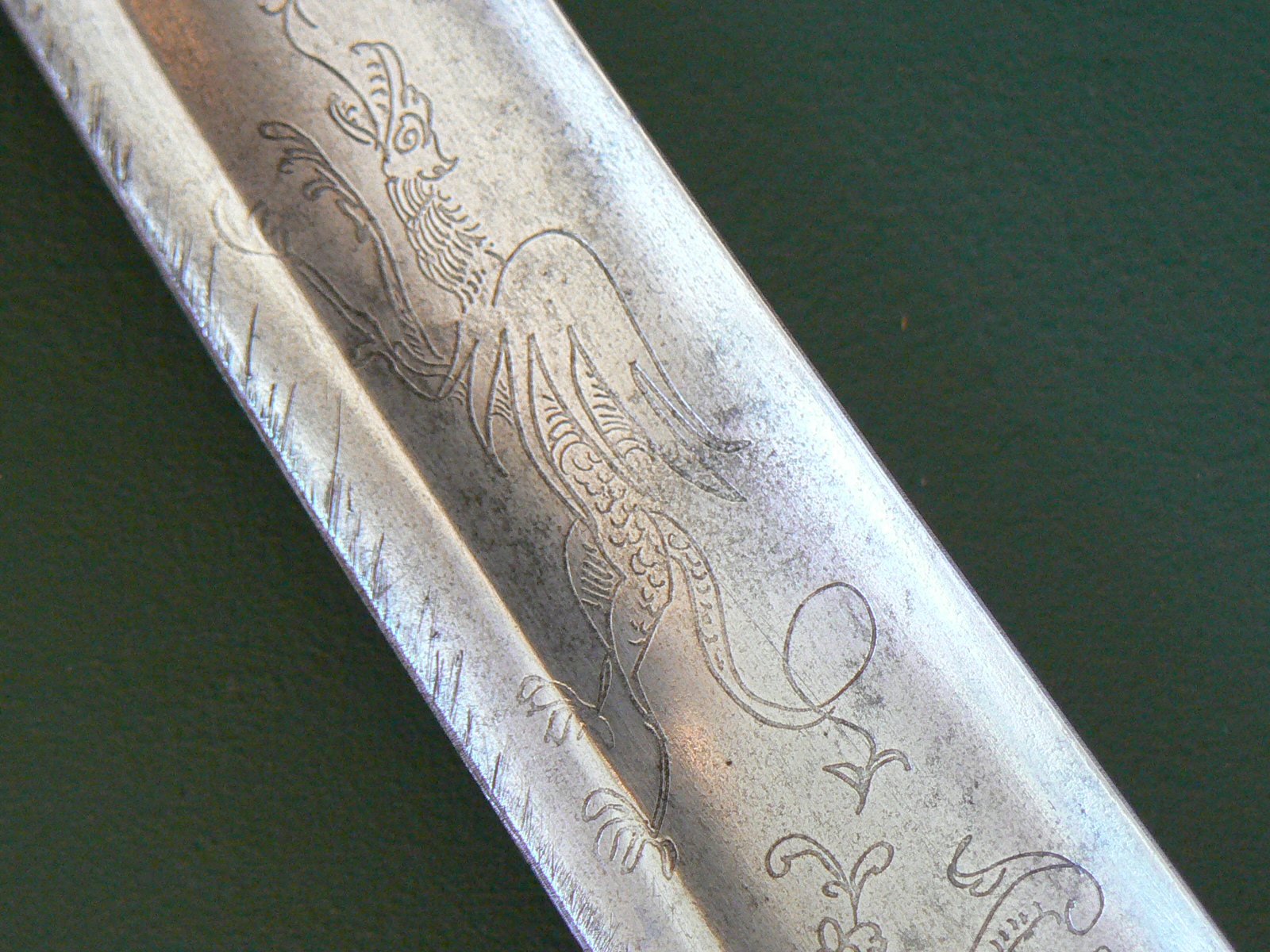
Maybe I’ll sleep on it. For a month or two…
Posted: 11/05/19 (15:38pm)As usual, I am beginning my blog by making excuses for why I have not written for so long. To be fair, my excuses are genuine and not just laziness. I have been remarkably busy in so many ways – most of which are so mundane as to make them unworthy of writing about.
Bygone Blades is doing well and keeping me on my toes trying to find new and exciting stock items. That in itself is time consuming. I spend a couple of hours every day (usually in the evenings after a full working day) going through auction catalogues, followed by more hours spent researching and learning about the history, patterns and values of swords, bayonets and knives of all descriptions. There is so much to learn!
Having identified items of interest, and before going to the auction, I research each item. I learn about the pattern and variations, establish whether or not there are fakes on the market and if so how to identify them. I learn the values of the items so that I know what I can reasonably expect to sell them for and from this; I set a price that I can afford to pay and still make a living. All this takes many hours over many days.
As well as doing research, there is the day-to-day running of the business – responding to emails and enquiries, updating and maintaining the website, search engine optimisation, administration and accounting, packaging up sales and taking them to the delivery depot, etc., etc. All the little things that take time and eat up half of each day before I begin work in my workshop, completing customer restorations and commissions or cleaning newly acquired stock.
Twice a week I set up my photographic studio and photograph new items for the website. I edit the photos and then write the listings (often requiring more research). Listing stock a couple of times each week helps maintain my search engine ranking - regularly updating the website by adding pics and text helps keep me higher up the search results.
I spend a lot of time away from home at auctions and estate sales. Often I have to take pre-prepared stock listings with me so that I can update the website while I’m on the road. I also continue doing all the daily admin etc. This happens even when I am on holiday!
In fact, only two weeks ago today, Sue and I returned from having a fortnight holiday during which I continued to do all the daily tasks including listing stock twice weekly and responding to sales and enquiries – I bet you didn’t even notice that I was away!
As it was my 50th birthday, Sue and I decided to have a special holiday so we went to Hong Kong for 3 nights then on to Bangkok, Thailand for another 3 nights followed by 8 nights on the beach. We had an amazing time. Thailand is one of the friendliest countries we have visited, the people are quick to smile and have a lovely, friendly manner. Hong Kong too was a great experience, enhanced by the friendly and helpful people.
Coming home was a “hot guns” landing, straight back into the thick of it. I had to get sales packaged up and shipped off along with receipts and emails written (I respond to each customer personally and do not use a generic template – it takes a little more time but I believe in the personal touch). I also had to find more stock.
I have just been away at auctions. I got home at 1am yesterday (Friday). I left home at 6am on Wednesday. It was a real whistle-stop trip and I covered quite a distance, almost 1000 miles from home in Scotland down to the south coast of England and back. It was well worth it. I bought some great and rare items, the first of which, a rare French Napoleonic period naval officers’ fighting dirk I added to the website yesterday evening.
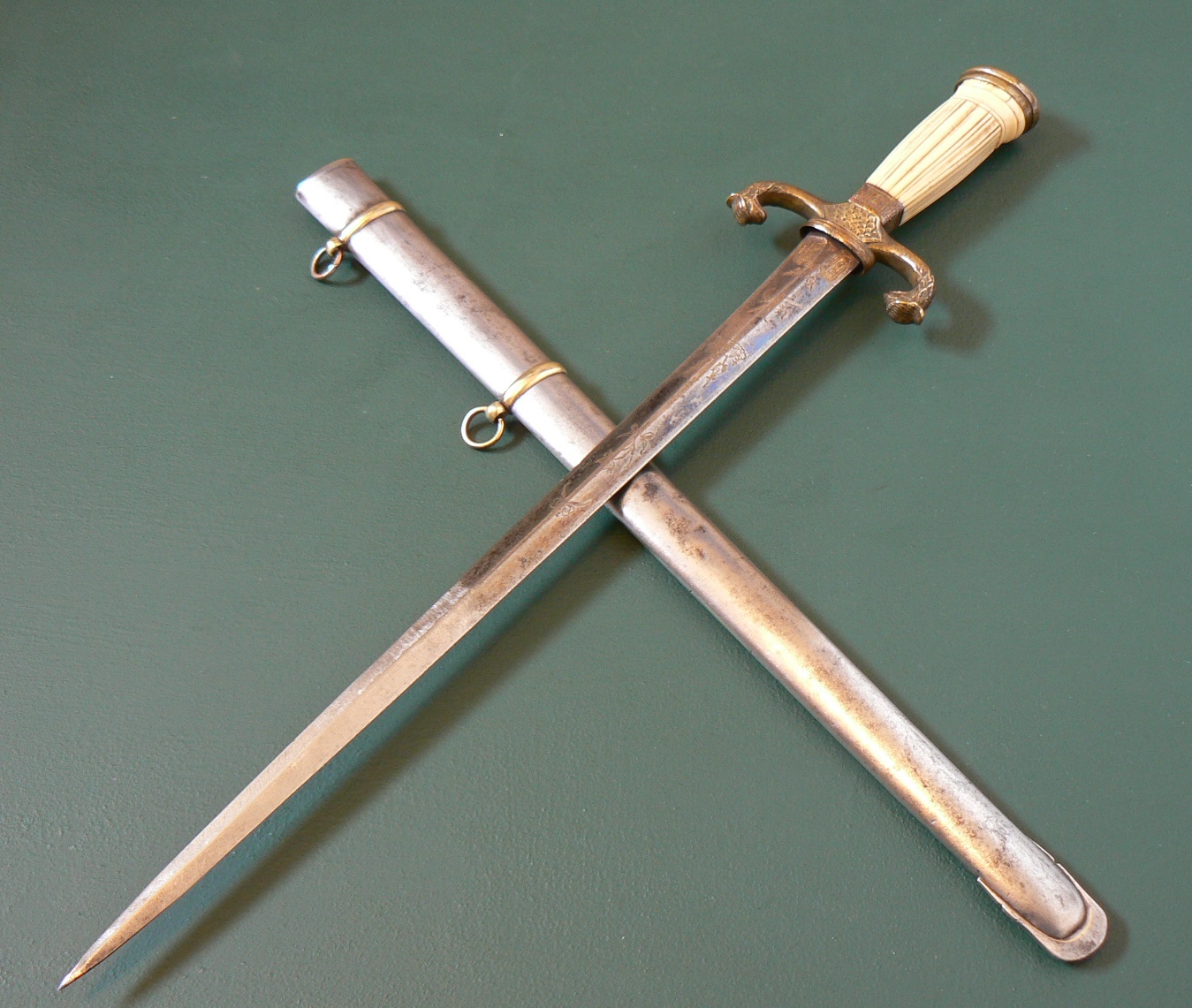
I will add another great item on Monday…
Today is the weekend – for some at least. I have spent the day so far packaging sales and taking them to the post office, followed by a few emails, responding to enquiries and finalising the acquisition of more stock. Then I did some research on naval dirks and now I am writing this blog (I had to break off to email a customer to thank them for the purchase that they just made).
So this is why I do not get round to writing my blog every week. I am always on the move and I do not want to bore you with the minutiae of my daily work. When I have something to say, that I hope will interest you I will write about it. In the meantime, I will just crack on with getting things done. It is not just a job; it is a passion, a commitment, a way of life. I work hard but I love what I do.
I play hard too!
Posted: 23/02/19 (15:18pm)Ten days since my last blog. Ten busy days.
I've driven over 2000 miles and visited 5 auctions. I’m currently in England, near Cambridge and will be driving home to Scotland tomorrow afternoon.
It has been a successful road trip. In Newcastle, Leicester, Peterborough and Ipswich I picked up a couple of lots at each auction, but yesterday near Lowestoft I hit the mother load.
On auction were the contents of a small private museum of militaria, comprising hundreds of swords and bayonets, many of them rare, some of them extremely so. If only I'd had more money...
I managed to pick up some great items. Among my favourites are a first pattern Canadian Ross rifle bayonet, an Austrian M1849 Jager Carbine sword bayonet, a Peninsular Wars period Brown Bess socket bayonet by Osborn & Gunby, two Prussian M1855 Fascinemesser, a first pattern French Berthier bayonet, a late 19th century Morro Kris and a British P1856 Pioneers hanger by Wilkinson. All of them scarce if not rare. The absolute star however is a Brunswick sword bayonet marked to the 1st New York Volunteer Artillery. The regiment was raised in 1861 and saw action throughout the Civil War.
I also have two P1907 Lee Enfield bayonets by rare makers. One made by Vickers and the other by Chapman.
All of the above and more will be added to the website over the coming weeks.
Posted: 12/02/19 (12:17pm)What a week it is shaping up to be! I have managed to get hold of a couple of extremely rare items. Both from the Napoleonic/Peninsular Wars. The first is a Royal Field Artillery enlisted man’s short sword dating from the early 1800’s and the other is an Artillery officer’s dirk from the same period.
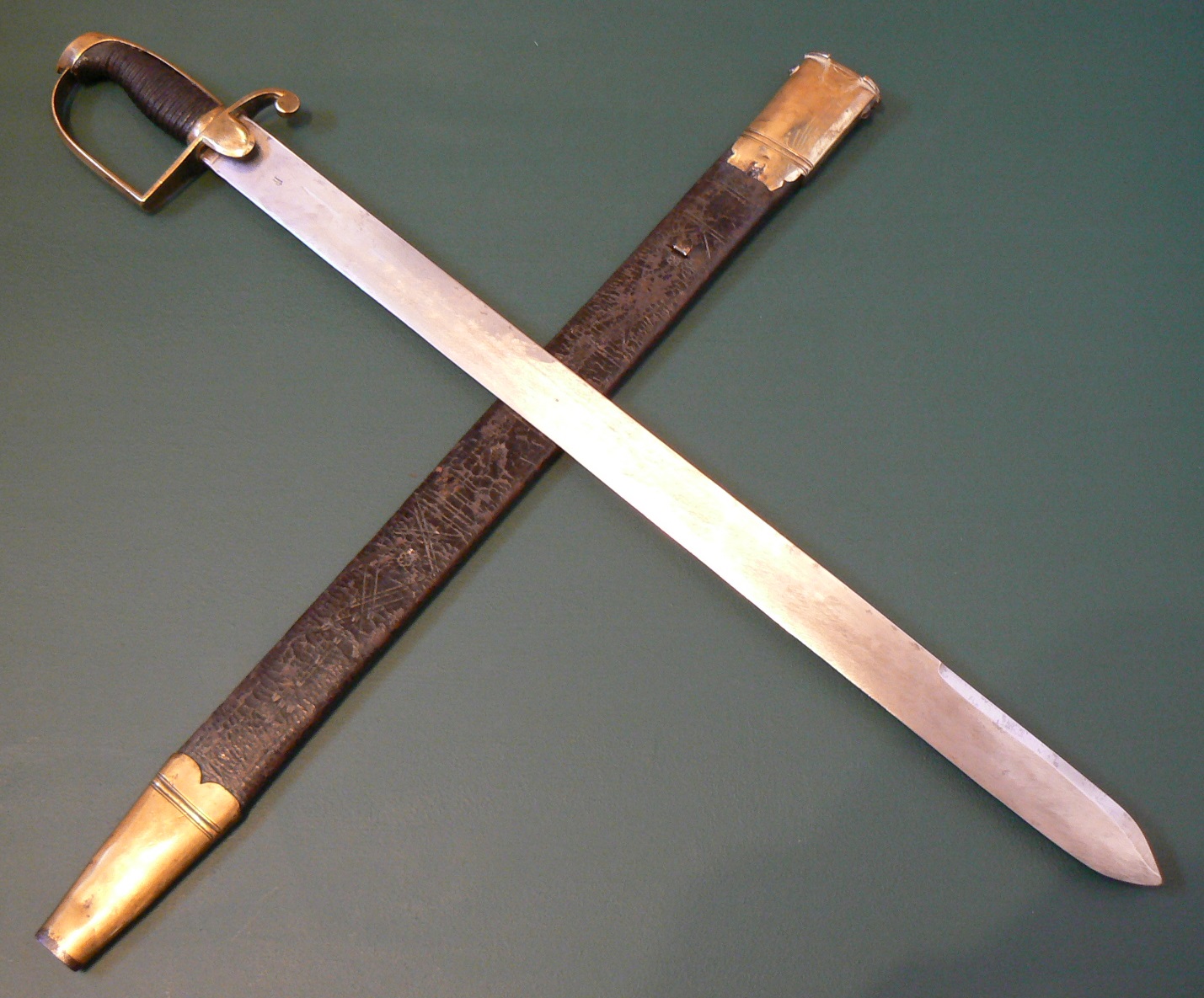
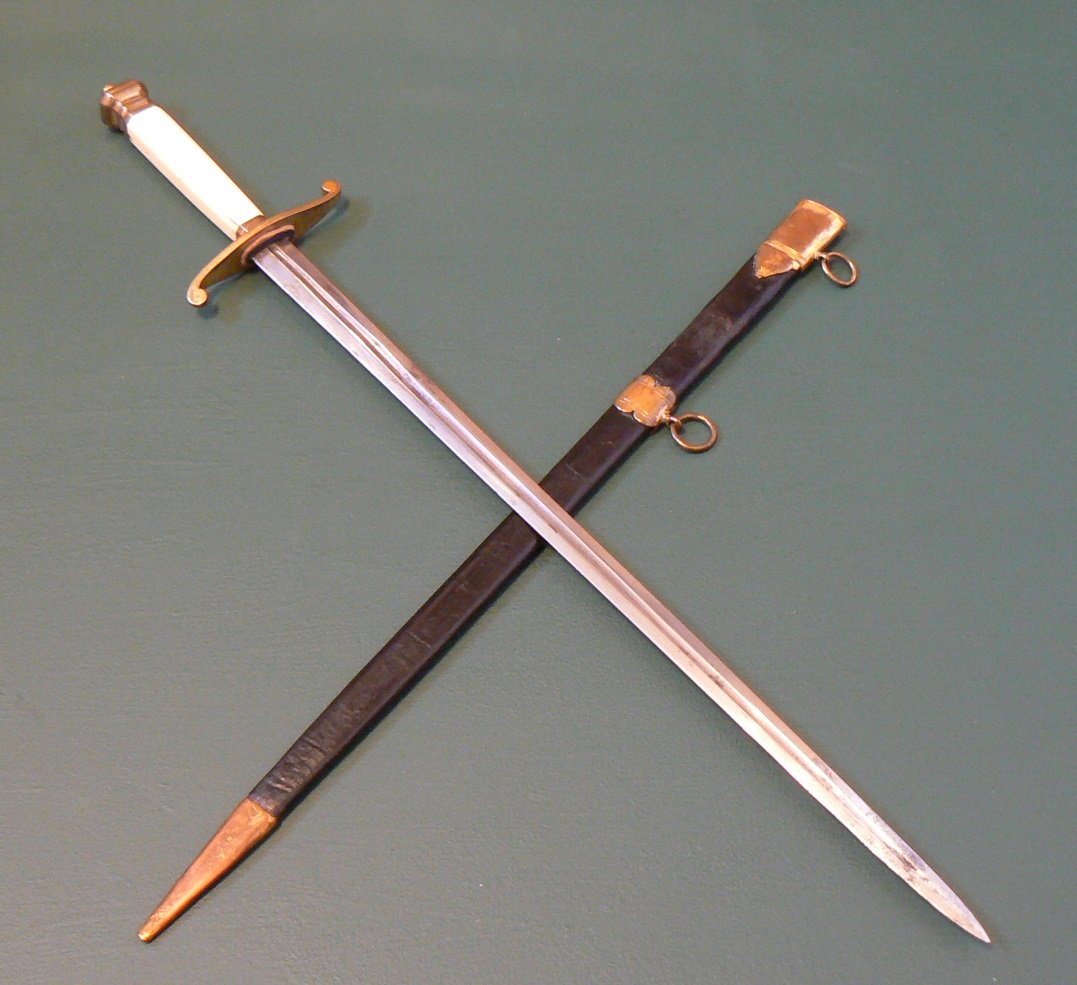
I will be adding the artillery gunners/artilleryman’s side arm to the website later this week. The officer's dirk is not for sale but I wanted to share it with you by way of my blog.
Both of these artillery side arms are incredibly hard to find. The chance of finding additional copies and in such great condition is about as likely as getting bitten by a toothed chicken!
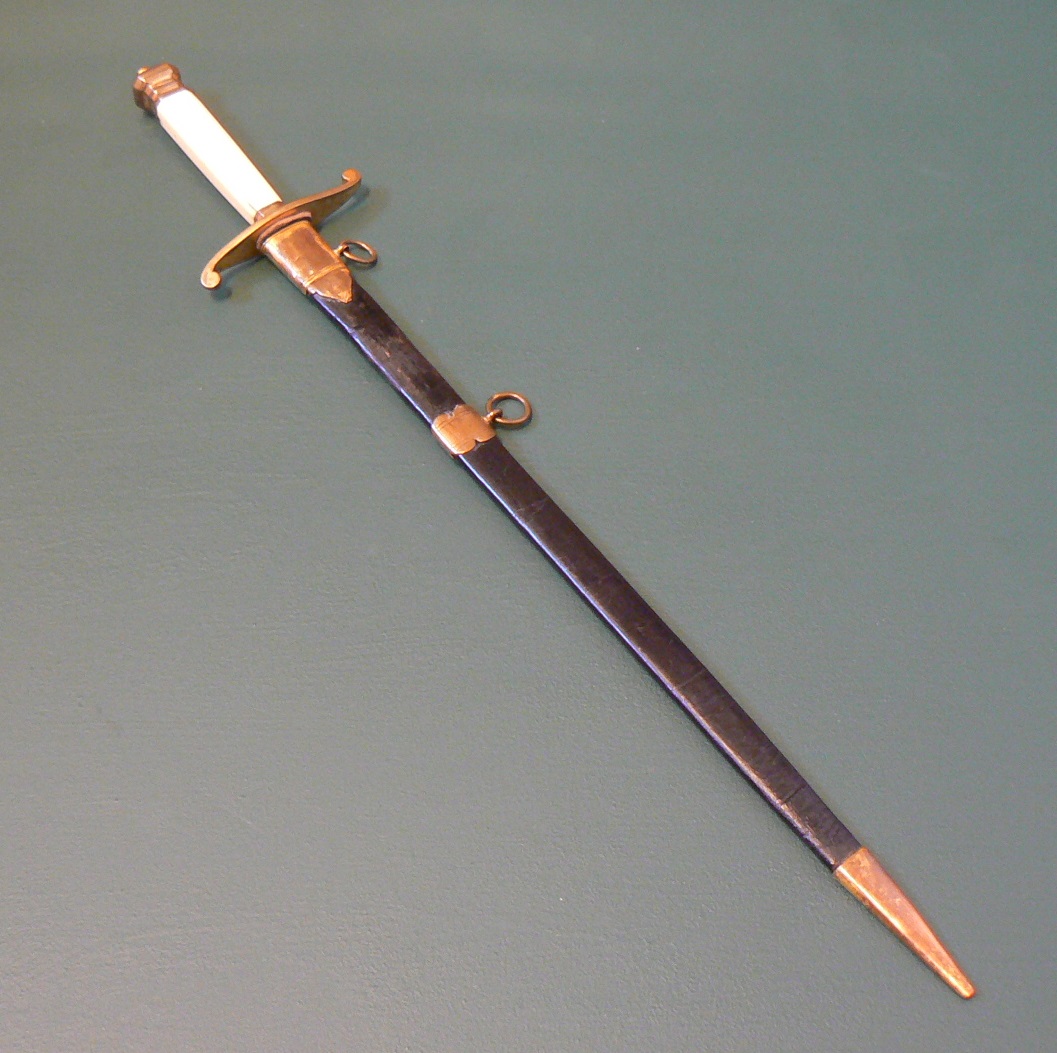
This incredibly rare military dirk was the property of an officer of the Chester-le-Street Volunteer Artillery, which was raised on the 1st October 1803. The Chester-le-Street Volunteer Artillery were disbanded in 1811.
Artillery officers of the period carried a cavalry type sabre but when dismounted to command a battery, they often chose to carry a dirk instead. The cavalry sabre, intended for combat on horseback was too long for the type of close quarter fighting that took place when defending the battery on foot. The most senior officers would have remained mounted in order to move quickly between batteries and better oversee and command the regiment. That being the case, it is likely that this dirk was the property of one of the nine fighting officers.
Those officers were:
Major Richard Bell; Captain Luke Collins; Captain John Johnson; Lieutenants William Pubus, George Greenwell and William Matthews and Second Lieutenants Joseph Sowler, Robert Tanner and John Croudace.
The 374mm double-edged blade has a long central fuller on both sides, running to within 15mm of the spear point. The blade is in excellent condition, bright and clean with only a few small patches of tarnish. The blade retains its fighting edges.
The octagonal ivory grip is in good condition and has a gilded brass bolster, recurved crosspiece with ball quillons and a faceted, cushion pommel and button through which the tang is peened. The hilt retains much of its original gilding.
The dirk is complete with its original black leather scabbard with gilded mounts. The leather is in great condition and the stitching is intact and sound. The throat of the scabbard bears a circular cartouche within which is engraved “Chester-le-Street Volunteers.”
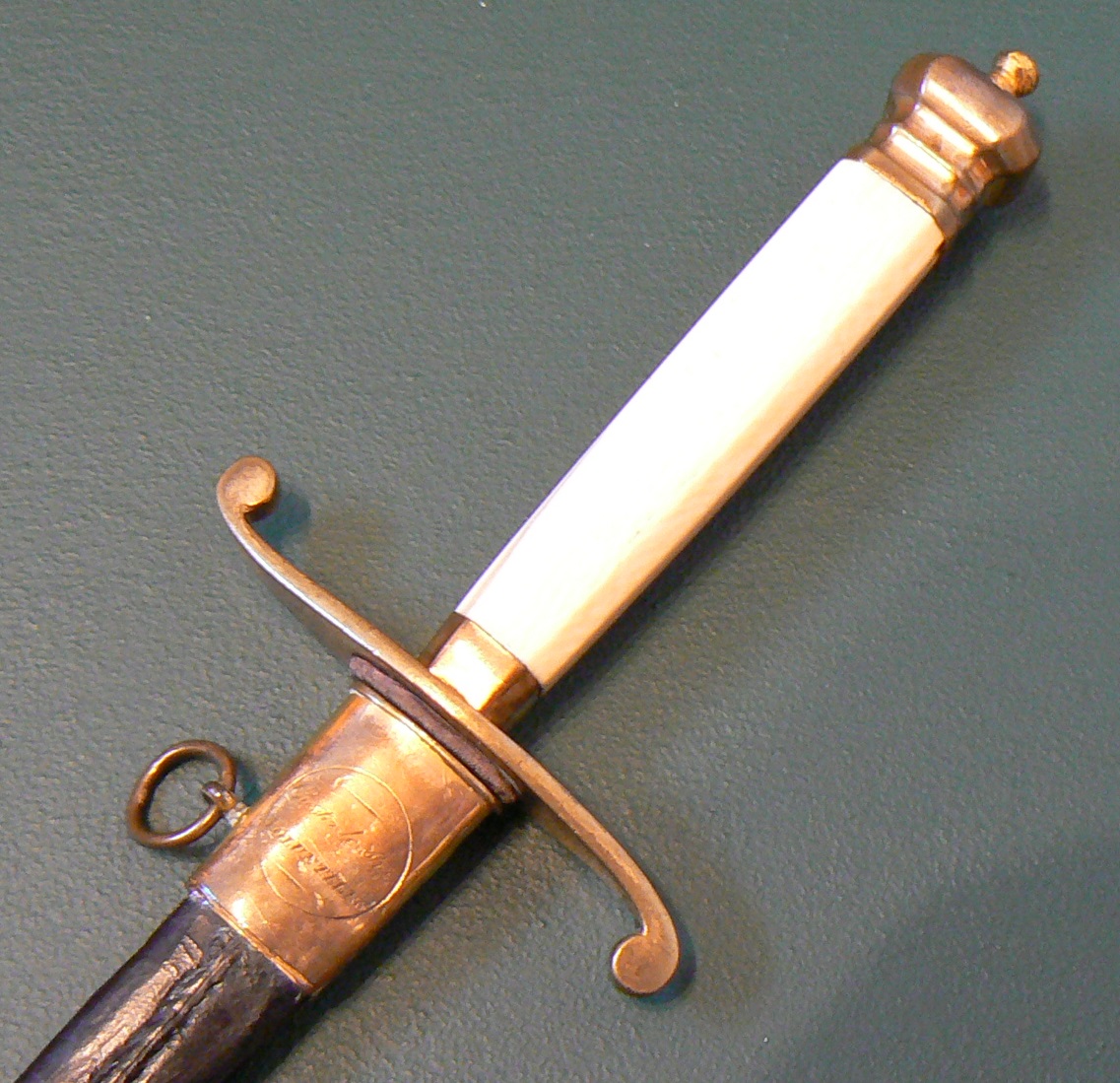
One to keep and cherish.
In a day or two you will find the Artillery gunner’s sword and additional photographs in the “Newly Added” section of the website.

